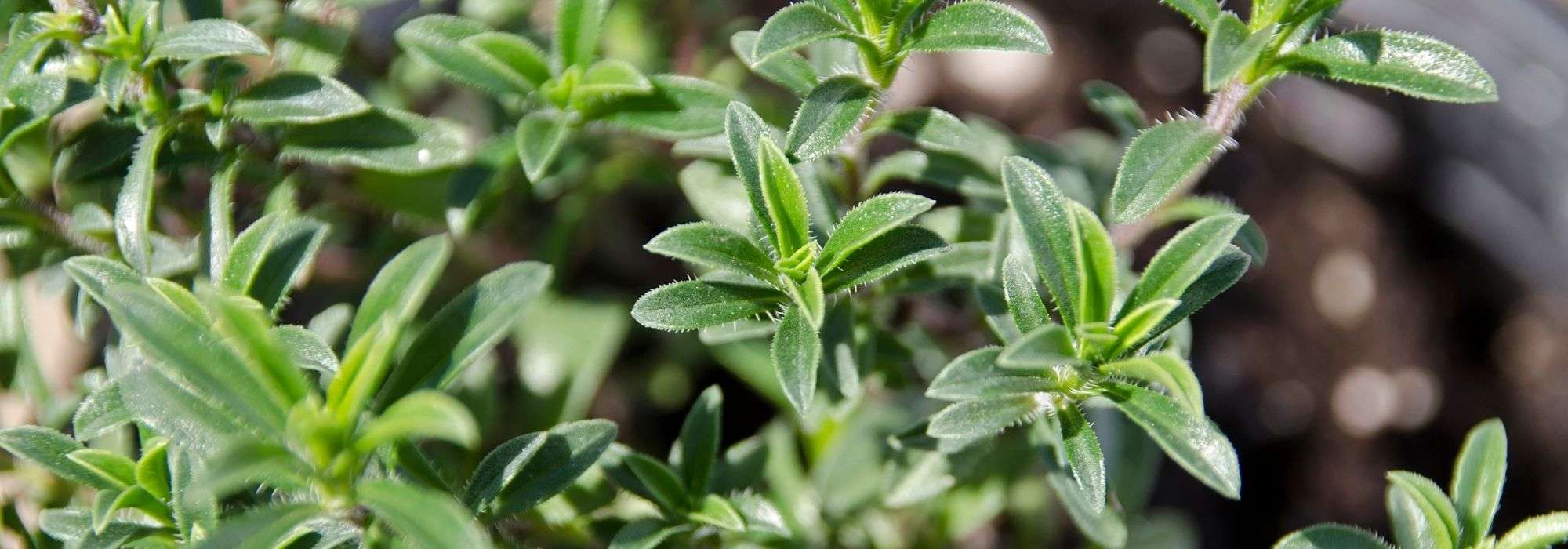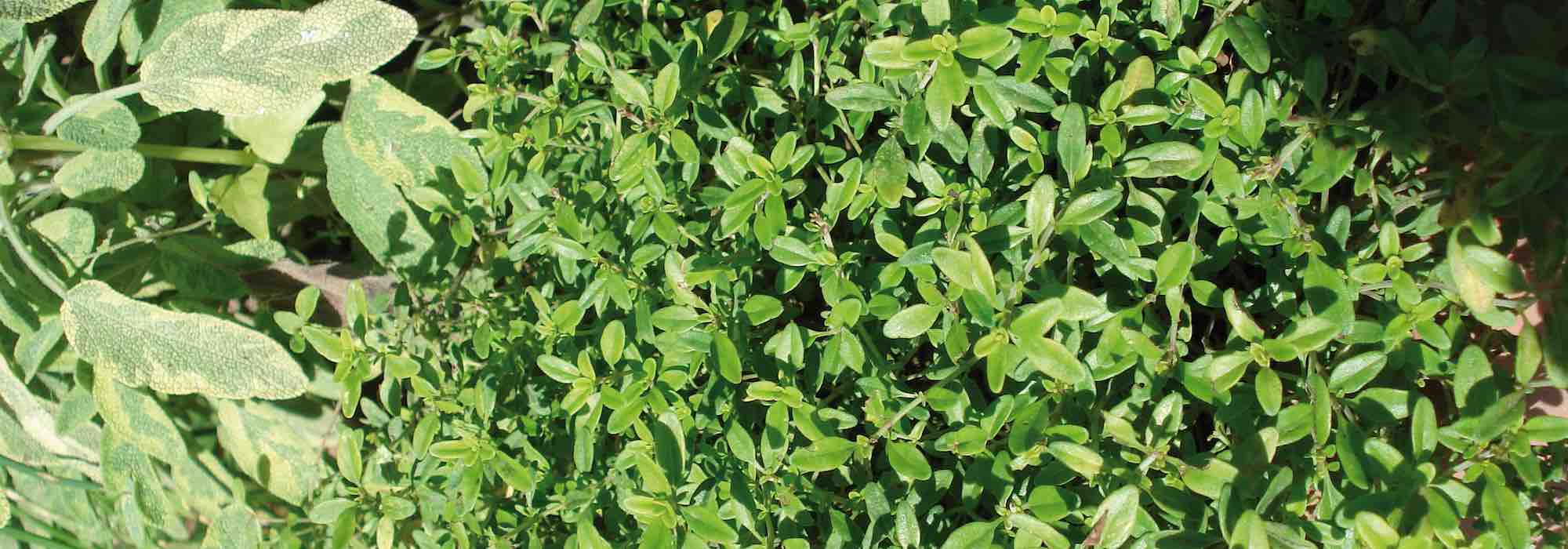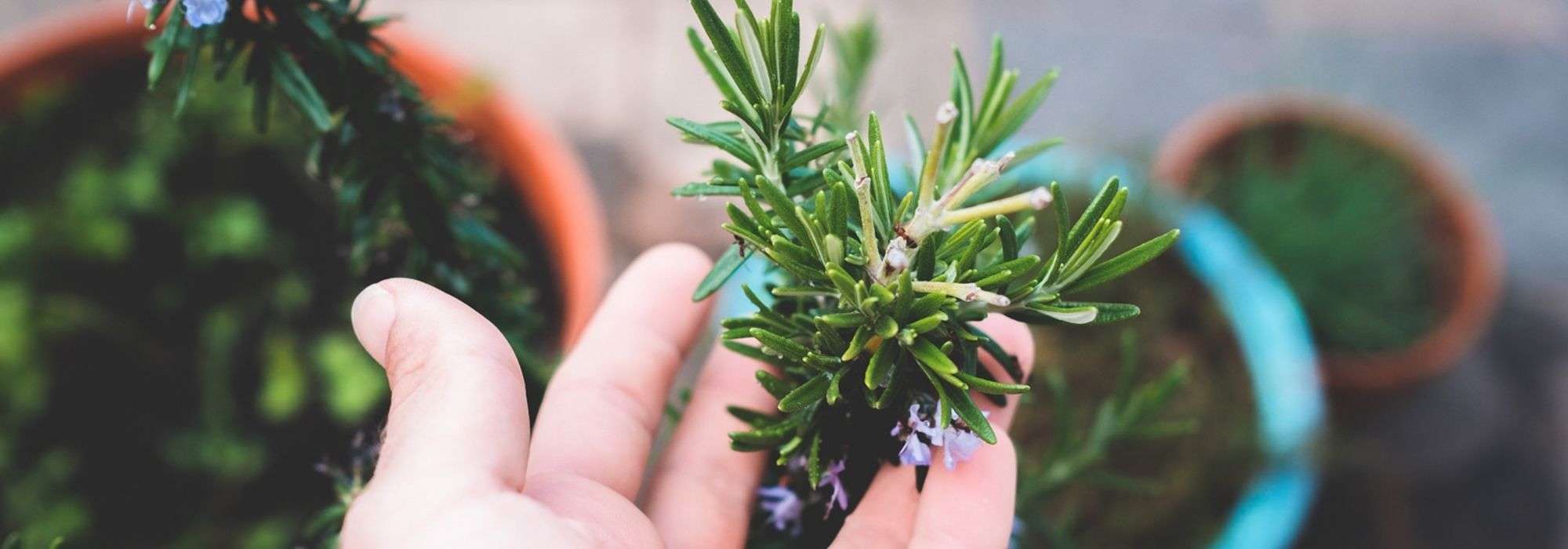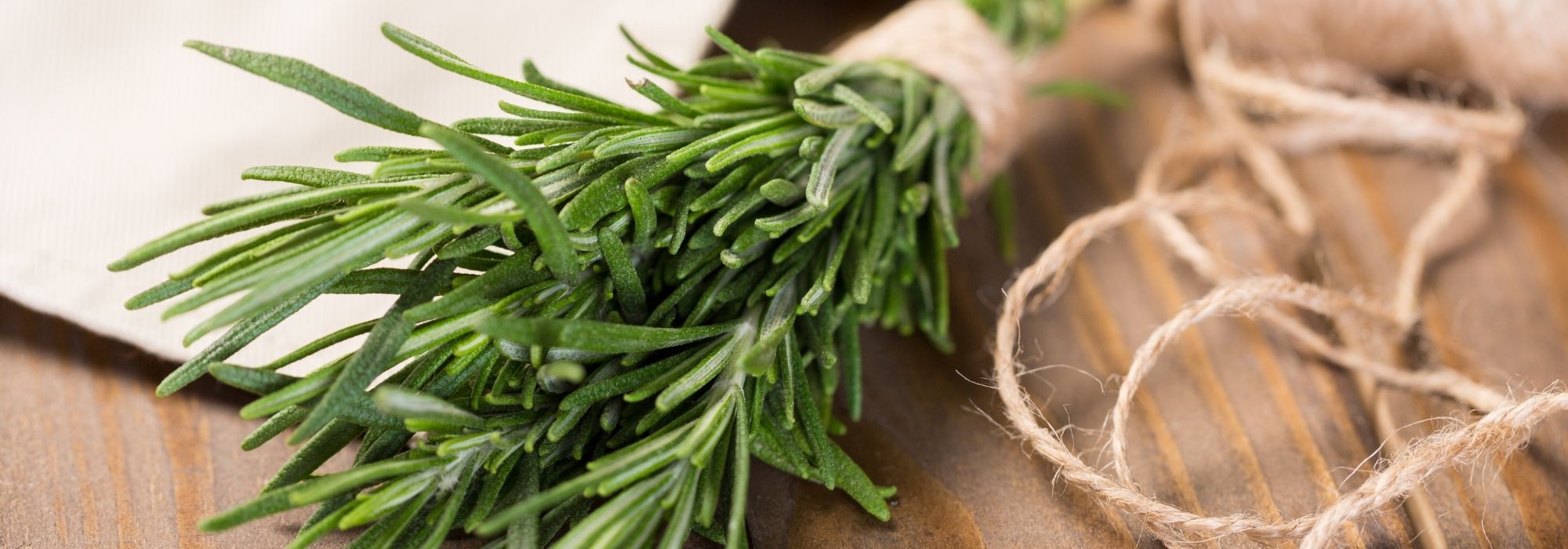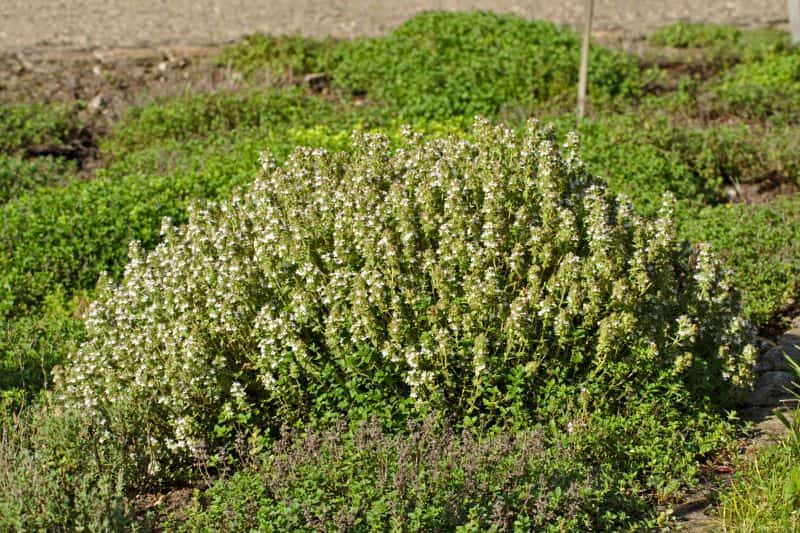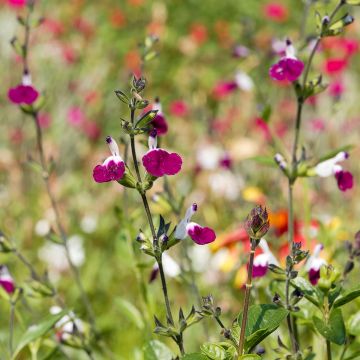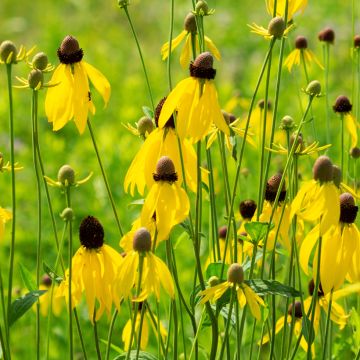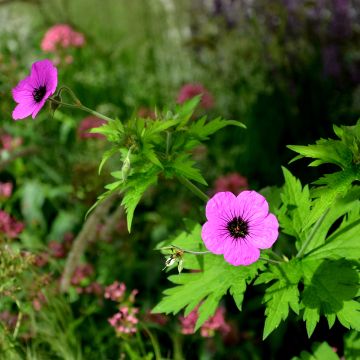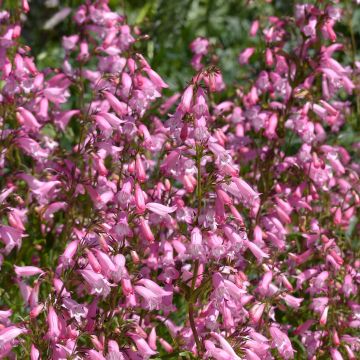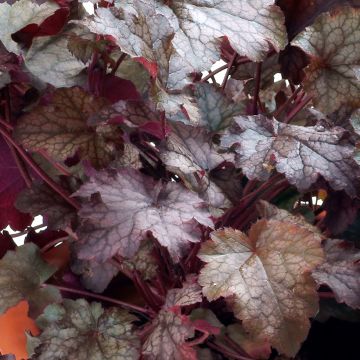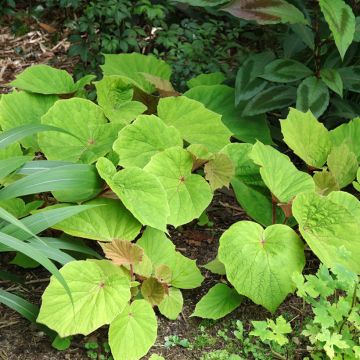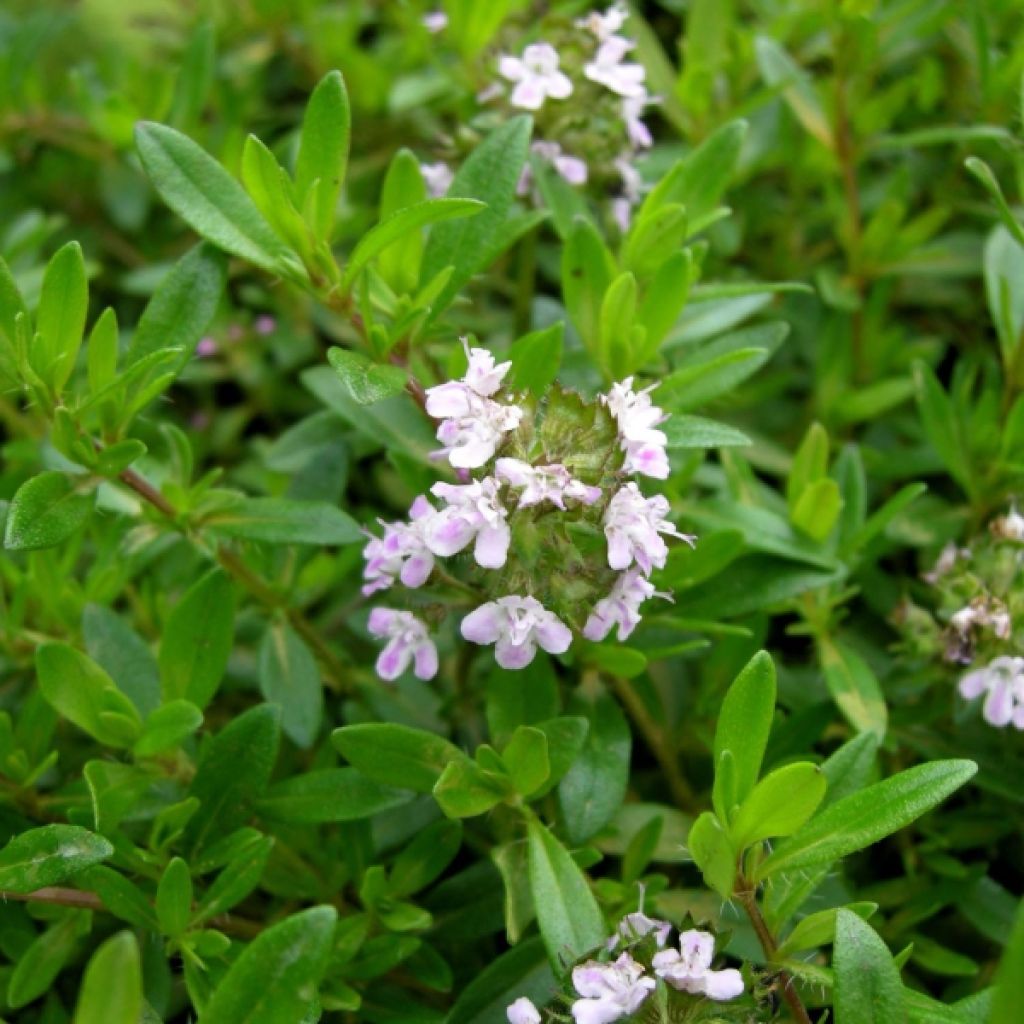

Satureja montana
Satureja montana
Satureja montana
Winter Savory
Hello, when I received mine, it was limp and didn't last very long in the box.
jocelyne, 05/08/2025
Special offer!
Receive a €20 voucher for any order over €90 (excluding delivery costs, credit notes, and plastic-free options)!
1- Add your favorite plants to your cart.
2- Once you have reached €90, confirm your order (you can even choose the delivery date!).
3- As soon as your order is shipped, you will receive an email containing your voucher code, valid for 3 months (90 days).
Your voucher is unique and can only be used once, for any order with a minimum value of €20, excluding delivery costs.
Can be combined with other current offers, non-divisible and non-refundable.
Home or relay delivery (depending on size and destination)
Schedule delivery date,
and select date in basket
This plant carries a 12 months recovery warranty
More information
We guarantee the quality of our plants for a full growing cycle, and will replace at our expense any plant that fails to recover under normal climatic and planting conditions.
Would this plant suit my garden?
Set up your Plantfit profile →
Description
The biennially bearing savory, in Latin Satureja montana, is part of the 'herbes de Provence'. It is a plant that is both highly melliferous, aromatic, medicinal, and condimental. It is commonly found on limestone slopes where it forms a small shrub with a modest appearance dressed in small dark foliage that disappears under a long white flowering, from spring to summer. It thrives in slightly arid and sun-drenched areas, and finds its place in the vegetable garden as well as in the ornamental garden, in the border or in a rockery.
The biennially bearing savory belongs to the family of Lamiaceae or Labiatae, just like the thyme to which it is closely related. This species is native to Southern Europe, North Africa (Algeria), and the Caucasus. This plant can be in rocky and very sunny places. Its cold resistance is excellent (up to -15°C (5°F) at least), but in well-drained soils. It also tolerates dry summers well (slightly less than common thyme, however). Its foliage persists in winter.
This is a perennial shrub with a woody base, whose erect and ramified branches form a globally spreading and rounded tuft, fairly regular, about 30-40 cm (12-16in) in all directions. Its hairy and square-sectioned stems bear small opposite, leathery, shiny, linear leaves, 1 cm (0in) long, dark green, very fragrant when crushed, with a slightly peppery aroma. Flowering usually takes place from May to July in the South of France, but from July to October further north. At the tip of the stems, verticillate or bunches of 7 pendulous white flowers with 2 lips, less than 1 cm (0in) in diameter, are born. These flowers are very visited by bees. The honey of the biennially bearing savory, rare, has a delicious flavour, much finer than that of lavender honey. Outside of its preferred climate, the biennially bearing savory ages quite poorly: we recommend renewing the plantings every 5 years.
The satureja montana is cultivated like thyme, lavender, rosemary, and marjoram, with which it can be perfectly associated on a dry slope or in a very sunny rockery. Cultivating it in a pot is possible in loose and well-drained soil. You can arrange the border of a gravel path by alternating, for example, biennially bearing savory with different thymes (Thymus capitata, ciliatus, herba-barona), germander (Teucrium chamaedrys), small sedums, cotton lavenders. This plant only requires pruning once a year in September. One of the charms of this type of arrangement lies in the scents emitted by all these plants after a hot day. This creates forms a complex fragrance to be savored with closed eyes: intense, captivating, unforgettable, which constitutes the quintessence of the Mediterranean countryside.
In the kitchen: the leaves of the biennially bearing savory are harvested in the morning. Wait until the plant is at least one year old. For preservation, harvest the leaves at the beginning of flowering and dry them to keep the flavour intact. They are used to flavor salads, sauces, stews, legumes, and grilled dishes. The essential oil of Satureja montana contained in the leaves has antiseptic, stimulating, and digestive properties. The essential oil of the biennially bearing savory is one of the most potent used in aromatherapy: it is used under the supervision of a professional as there are many contraindications.
In the vegetable garden or in the garden, the biennially bearing savory repels aphids. It pairs well with peas, beans, and fava beans, which it protects from insects. However, keep this plant away from sage, turnips, and radishes.
Tips: To repel aphids, associate savory with basil near sensitive plants.
Satureja montana in pictures
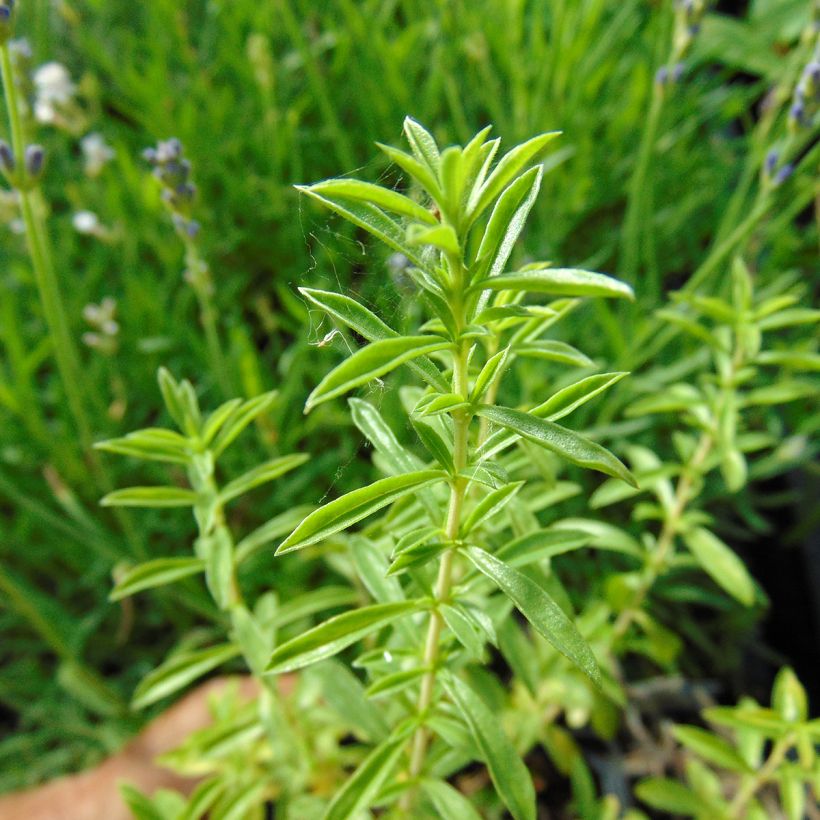

Flowering
Foliage
Plant habit
Botanical data
Satureja
montana
Lamiaceae
Winter Savory
Mediterranean
Planting and care
Satureja montana is planted in spring or autumn in a light and well-drained soil (stony, rocky or sandy). It does not tolerate heavy and compact soils, especially in winter. It strongly prefers calcareous to very calcareous soils, but it also thrives in neutral or slightly acidic soils. Add coarse sand or gravel to the original soil and plant in a slightly raised mound in a very sunny location. In harsh winter conditions, mulch the base with a thick layer of dead leaves. Cut back the clump in April to 15 cm (6in) from the ground. Pot cultivation is preferable in regions with a too humid and cold climate in winter. Plant in a loose and well-drained potting soil in a pot with a diameter of 40 to 50 cm (16 to 20in). The more the savory plant grows in poor and dry soil, the more fragrant its foliage becomes: the production of essential oils is a defense mechanism for plants in the scrubland.
Planting period
Intended location
Care
Planting & care advice
-
, onOrder confirmed
Reply from on Promesse de fleurs
Similar products
Haven't found what you were looking for?
Hardiness is the lowest winter temperature a plant can endure without suffering serious damage or even dying. However, hardiness is affected by location (a sheltered area, such as a patio), protection (winter cover) and soil type (hardiness is improved by well-drained soil).

Photo Sharing Terms & Conditions
In order to encourage gardeners to interact and share their experiences, Promesse de fleurs offers various media enabling content to be uploaded onto its Site - in particular via the ‘Photo sharing’ module.
The User agrees to refrain from:
- Posting any content that is illegal, prejudicial, insulting, racist, inciteful to hatred, revisionist, contrary to public decency, that infringes on privacy or on the privacy rights of third parties, in particular the publicity rights of persons and goods, intellectual property rights, or the right to privacy.
- Submitting content on behalf of a third party;
- Impersonate the identity of a third party and/or publish any personal information about a third party;
In general, the User undertakes to refrain from any unethical behaviour.
All Content (in particular text, comments, files, images, photos, videos, creative works, etc.), which may be subject to property or intellectual property rights, image or other private rights, shall remain the property of the User, subject to the limited rights granted by the terms of the licence granted by Promesse de fleurs as stated below. Users are at liberty to publish or not to publish such Content on the Site, notably via the ‘Photo Sharing’ facility, and accept that this Content shall be made public and freely accessible, notably on the Internet.
Users further acknowledge, undertake to have ,and guarantee that they hold all necessary rights and permissions to publish such material on the Site, in particular with regard to the legislation in force pertaining to any privacy, property, intellectual property, image, or contractual rights, or rights of any other nature. By publishing such Content on the Site, Users acknowledge accepting full liability as publishers of the Content within the meaning of the law, and grant Promesse de fleurs, free of charge, an inclusive, worldwide licence for the said Content for the entire duration of its publication, including all reproduction, representation, up/downloading, displaying, performing, transmission, and storage rights.
Users also grant permission for their name to be linked to the Content and accept that this link may not always be made available.
By engaging in posting material, Users consent to their Content becoming automatically accessible on the Internet, in particular on other sites and/or blogs and/or web pages of the Promesse de fleurs site, including in particular social pages and the Promesse de fleurs catalogue.
Users may secure the removal of entrusted content free of charge by issuing a simple request via our contact form.
The flowering period indicated on our website applies to countries and regions located in USDA zone 8 (France, the United Kingdom, Ireland, the Netherlands, etc.)
It will vary according to where you live:
- In zones 9 to 10 (Italy, Spain, Greece, etc.), flowering will occur about 2 to 4 weeks earlier.
- In zones 6 to 7 (Germany, Poland, Slovenia, and lower mountainous regions), flowering will be delayed by 2 to 3 weeks.
- In zone 5 (Central Europe, Scandinavia), blooming will be delayed by 3 to 5 weeks.
In temperate climates, pruning of spring-flowering shrubs (forsythia, spireas, etc.) should be done just after flowering.
Pruning of summer-flowering shrubs (Indian Lilac, Perovskia, etc.) can be done in winter or spring.
In cold regions as well as with frost-sensitive plants, avoid pruning too early when severe frosts may still occur.
The planting period indicated on our website applies to countries and regions located in USDA zone 8 (France, United Kingdom, Ireland, Netherlands).
It will vary according to where you live:
- In Mediterranean zones (Marseille, Madrid, Milan, etc.), autumn and winter are the best planting periods.
- In continental zones (Strasbourg, Munich, Vienna, etc.), delay planting by 2 to 3 weeks in spring and bring it forward by 2 to 4 weeks in autumn.
- In mountainous regions (the Alps, Pyrenees, Carpathians, etc.), it is best to plant in late spring (May-June) or late summer (August-September).
The harvesting period indicated on our website applies to countries and regions in USDA zone 8 (France, England, Ireland, the Netherlands).
In colder areas (Scandinavia, Poland, Austria...) fruit and vegetable harvests are likely to be delayed by 3-4 weeks.
In warmer areas (Italy, Spain, Greece, etc.), harvesting will probably take place earlier, depending on weather conditions.
The sowing periods indicated on our website apply to countries and regions within USDA Zone 8 (France, UK, Ireland, Netherlands).
In colder areas (Scandinavia, Poland, Austria...), delay any outdoor sowing by 3-4 weeks, or sow under glass.
In warmer climes (Italy, Spain, Greece, etc.), bring outdoor sowing forward by a few weeks.






























